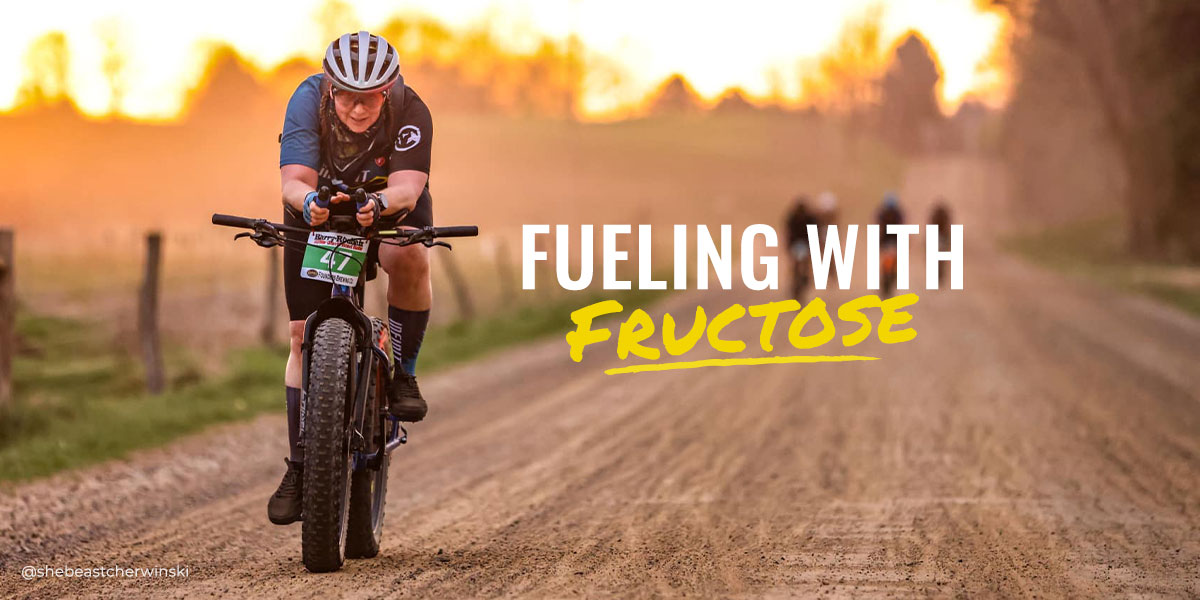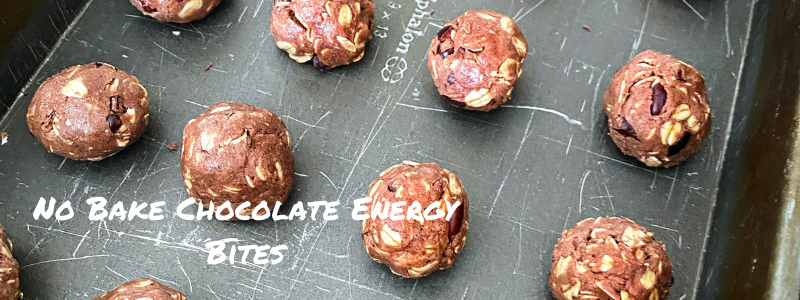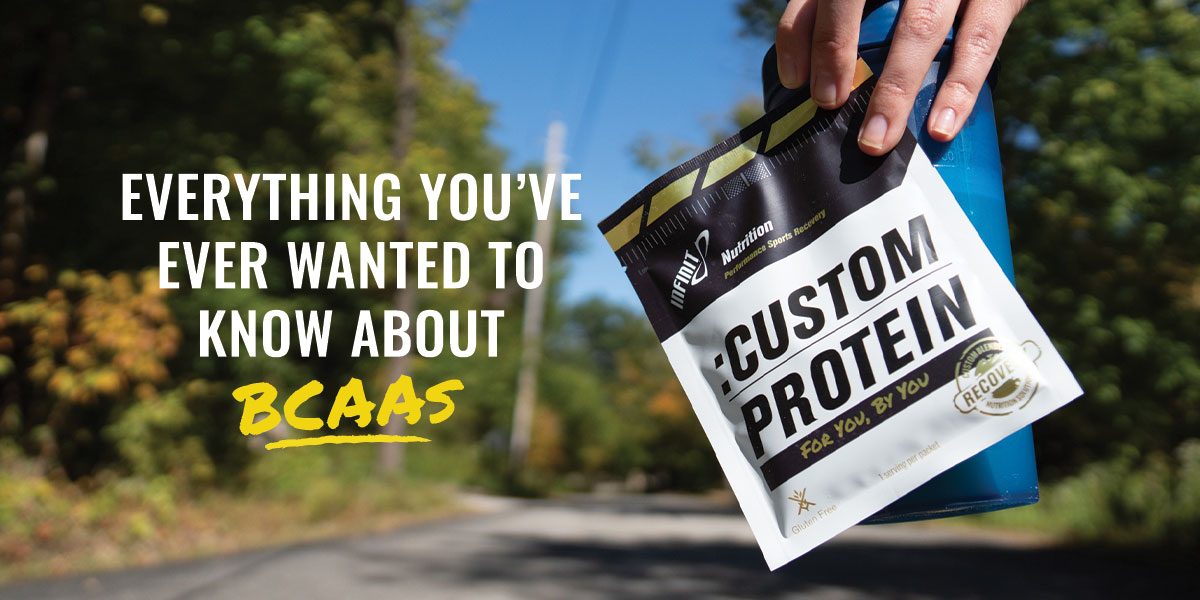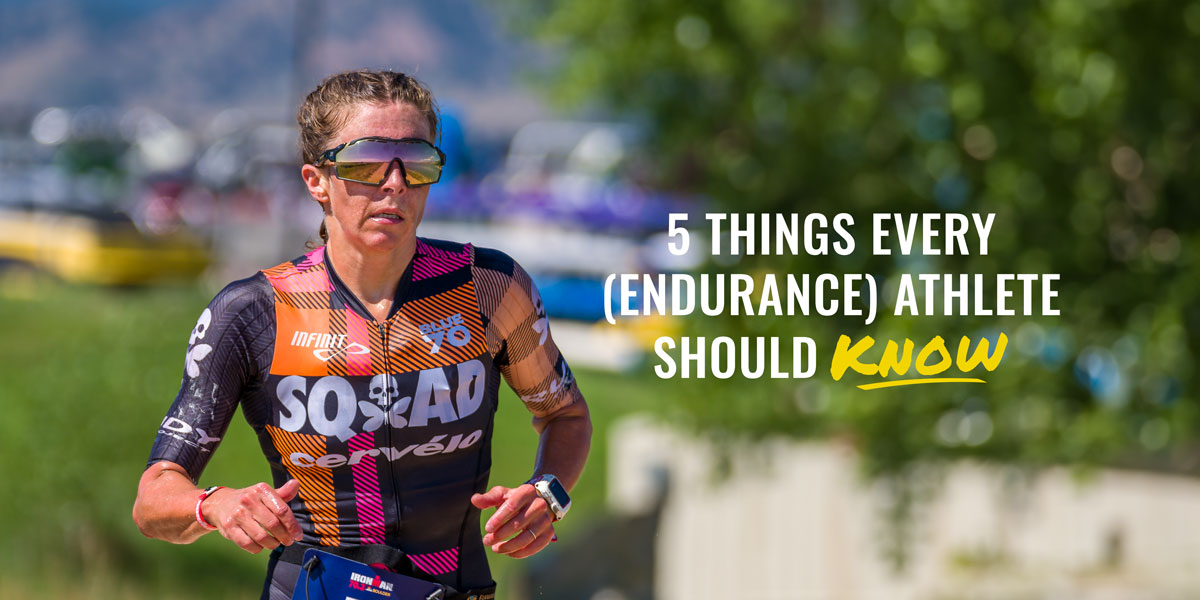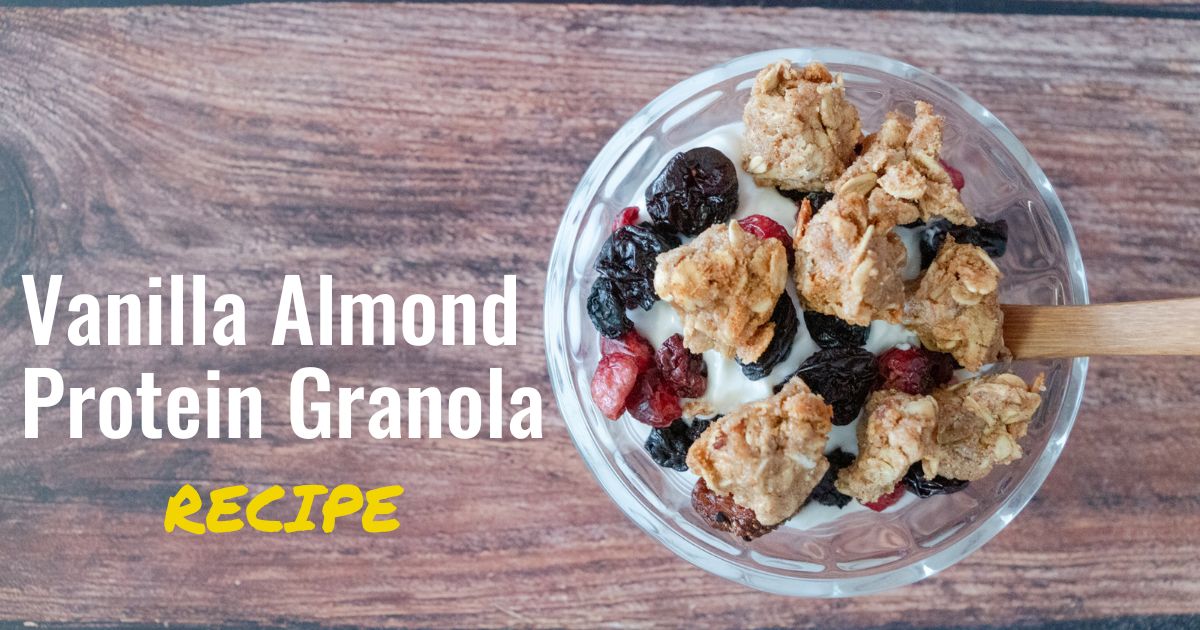How to Create a Nutrition Plan to Fuel Your Swim Training
- By INFINIT Interns
- Aug 1, 2023
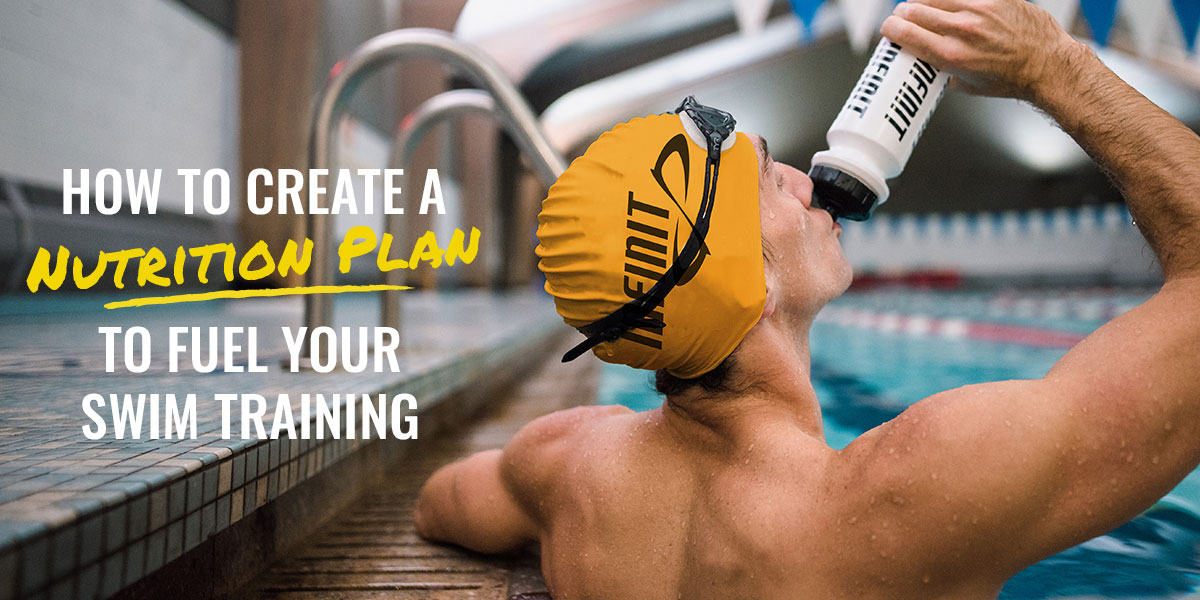
The Right Diet Can Optimize Both Health and Performance
Nutrition is one of the major keys to an athlete’s success.
Swimming is no exception. In fact, swimming’s full-body nature makes it one of the most physically demanding sports out there, with even “short” swim workouts requiring high levels of energy and endurance.
Your sport (and distance), goals, basic nutritional needs, and dietary preferences should be factored in when developing a nutrition plan that will work for you. Personalizing a nutrition plan is the best way to ensure it fits into an individual’s lifestyle and leads to increased diet adherence.
When creating a swim nutrition plan, you should think of it in two parts:
- A well-balanced everyday diet to support your overall fitness and health.
- Properly timed training nutrition strategy to support energy, and provide the building blocks for muscle maintenance, growth, and recovery.
So let’s dive into the basics to empower you to create your own nutrition plan to support your swim training and racing.
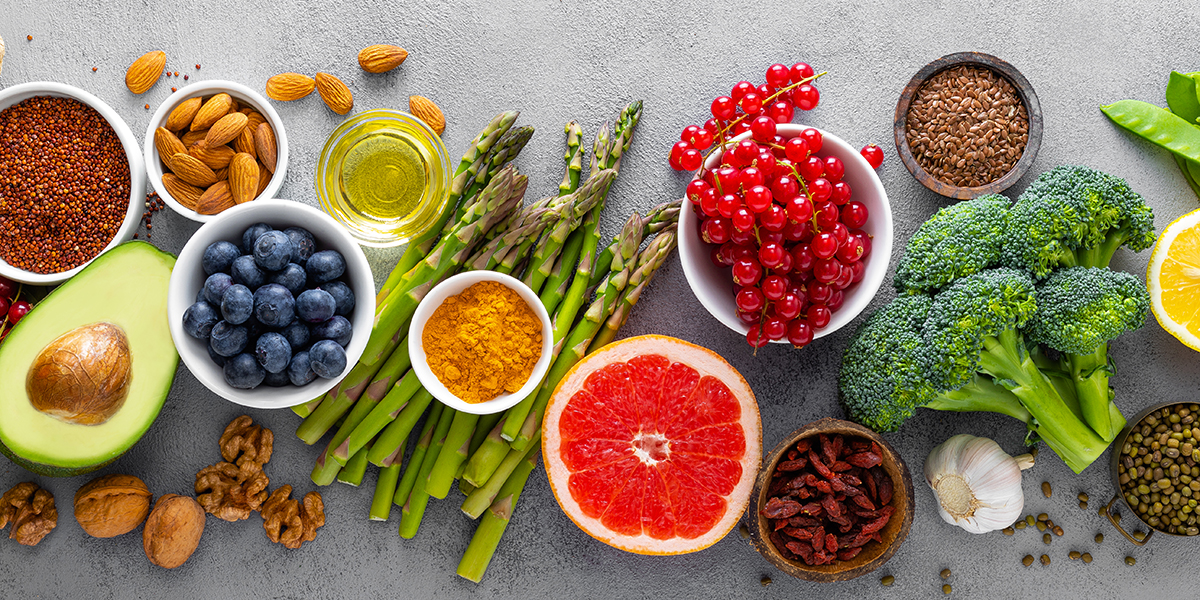
Nutrition for Everyday Fitness + Health
A well-balanced overall diet supports more than your workouts — It powers us through every facet of our days and lays the foundation for our health and wellness. A balanced diet should focus on whole foods, lean proteins, proper hydration, plenty of plants, and should provide adequate amounts of macronutrients (carbohydrates, protein, fats) and essential micronutrients (vitamins and minerals).
Hydration: The average human body is 60% water. Proper hydration is how we clear toxins from the body and keep bodily systems functioning efficiently. It is critical in regulating body temperature, helps lubricate joints, and so much more.
Carbohydrates: Carbohydrates are the main source of energy for not just athletes, but all humans. Eating a diet that is rich in non-refined carbohydrates (whole grains, fruits, and vegetables) helps fuel every cell in your body and serves as a rich source of fiber and essential vitamins and minerals.
Protein: Protein, and their building blocks called “amino acids,” are essential components of muscle formation and play a role in vital bodily processes, including immune system function and hormone production and regulation. Good sources of protein include lean meats, fish, dairy products, nuts, and legumes.
Protein becomes even more important to athletes as we age. In fact, recent research shows that the general recommendation of 0.8g/kg/d of protein (0.8 grams of protein per kilogram of body weight per day) is not nearly enough to properly sustain muscle health in athletes over the age of 50, and these masters athletes should really be targeting 1.2-1.7g/kg/per day (80-115g protein per day for a 150lb athlete).
Consuming protein-rich foods and beverages, aiming for about 20-30g per meal or snack, is the best way to hit your protein goals. Many people also turn to protein supplements as a convenient way to help pad their protein intake. You can find a wide array of protein powders and drinks on the market, but pay close attention to these products' quality and purity. It’s best to use a reputable brand made in the USA.
In partnership with U.S. Masters Swimming, Ohio-based INFINIT Nutrition developed a line of nutrition drink mixes tailored to meet the needs of their diverse members. The U.S. Masters Daily Protein Blend contains 20 grams of protein per serving; taking one or two servings a day will significantly boost your protein intake to help reach the recommended range of 80-115 grams per day.
Fats: Fats have a bad reputation because they are so calorically dense, but they are essential to everyday living. Without consuming fats daily fat-soluble vitamins; vitamin A, D, E, and K are unable to be adequately absorbed, hindering many processes in the body.
That being said, not all fats are created equal. There are four different types of fats: trans, saturated, monounsaturated, and polyunsaturated. You should try to avoid consuming trans fat, limit saturated fat intake, and increase consumption of mono- and polyunsaturated fats.
Trans fats are manufactured and unhealthy while saturated fats are related to many life threatening diseases like heart disease. Mono- and polyunsaturated fats may be the same caloric density as the other fats, but they offer many functional benefits that are necessary to living a healthy lifestyle.
Vitamins and minerals: Swimmers need a variety of vitamins and minerals to maintain overall health and support their athletic performance. Foods rich in vitamins and minerals include fruits, vegetables, whole grains, and lean protein sources. For recommended supplementation of vitamins and minerals, you should contact your physician or healthcare provider.
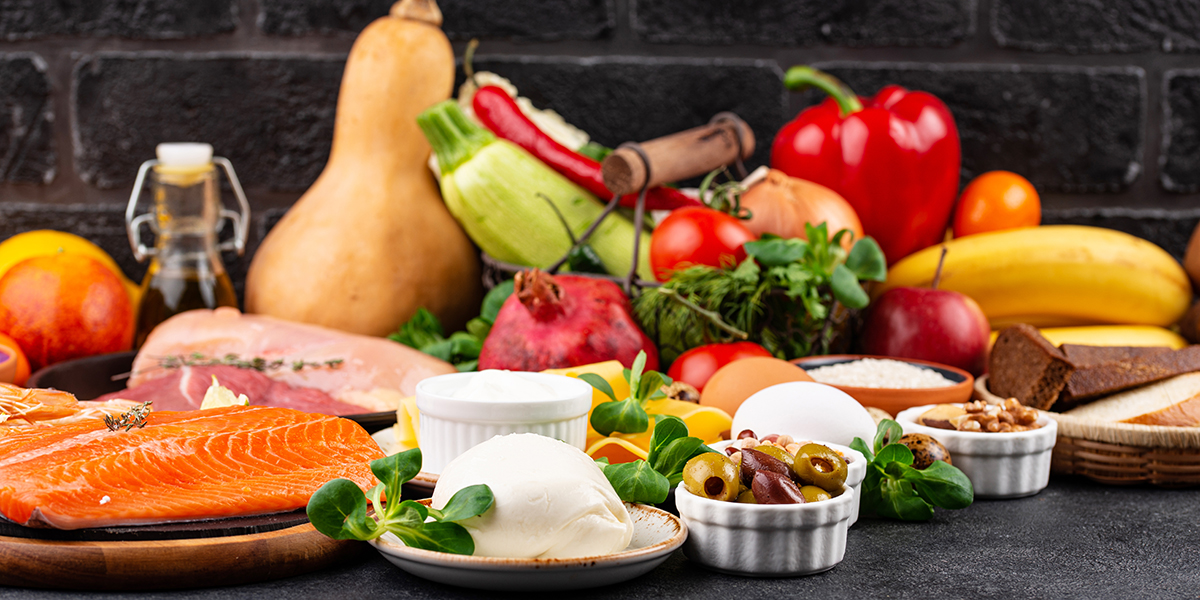
Nutrition for Training and Racing
Training
Figure Out Your Calorie Needs
“How much do I need to eat?” Many swimmers struggle with eating enough food throughout the day to support the energy needs of their training. So having a basic understanding of how much you should be eating on a daily basis can go a long way to performing and feeling better during your workouts.
You can use this simple MyPlate.gov tool to find out your recommended daily calorie intake goal based on your body size and activity level. But if you’re looking to really dial in your energy needs, you may want to look into working with a Registered Dietitian Nutritionist to personalize your plan.
Consider what your training looks like and how you feel afterward. Are you training mostly in the pool? Are you doing dry land training? What’s the duration? How intense are your workouts? All these questions need to be answered to figure out if additionalfueling supplementation before or during your workouts may be necessary.
Determine Your Sweat Rate
“I don’t sweat in the pool” is one of the most common misconceptions heard among swimmers. Just because you don’t feel yourself perspiring in the water, does not mean you aren’t.
Sweating is the body’s response to elevated body temperature, and it does not care if you’re on dry land or in the water. If your body is active and warm, your brain is going to tell your body to begin the cooling process by excreting sweat.
Performing a sweat rate test is a simple process that can help you gauge how much you should be drinking. This test is pretty simple, and only requires a scale. For best results, we’d recommend trying it during a dryland workout of an hour or more.
Keep in mind that you’re not just losing water when you sweat — Sweat contains water, sodium, potassium, magnesium, calcium, and chloride. These additional minerals are critical for neuromuscular contraction and also play a key role in fluid absorption.
Replenishing sweat losses with water alone over time can lead to a dangerous condition called “hyponatremia.” This occurs when the sodium levels in your bloodstream get so low that it starts affecting the nervous system and major bodily functions. Symptoms of hyponatremia to watch for include nausea, vomiting, confusion, low blood pressure, muscle weakness or twitching. In serious cases hyponatremia can lead to seizures, coma, or even death.
This is why electrolytes are such an important part of rehydration. Consuming an isotonic sports drink with sodium and other electrolytes like the U.S. Masters Swimming Training Mix ensures you are safely replenishing and rehydrating during workouts.

Focus on Post-Workout Recovery
Recovery is where improvements and gains happen. The goals of recovery nutrition boil down to the “three R’s” — Refuel, Rebuild and Rehydrate.
Refuel with carbs. During a workout your body uses up a good amount of blood sugar, and often has to tap into muscle carb stores or “glycogen” to do it. Afterwards you should refuel and restock your muscle glycogen by consuming an adequate amount of carbohydrates.
Rebuild with protein. During activity your muscles are in a state of breakdown. After a workout, the breakdown stops and your body shifts into a rebuilding state, stimulating the muscles to repair and rebuild stronger. Aim for at least 20 grams of protein within 1 hour after your workout ends.
Rehydrate with fluid. Aim for 16-24 oz of water for every pound of body weight lost during activity.

Determine if Supplements are for You
There is no shortage of supplements out there claiming to be the key to improving athletic performance. These supplements are sometimes referred to as “ergogenic aids.”
People often think of ergogenic aids as powders and pills that only body builders and elite athletes use. But in reality, everything from sports drinks to your morning cup of coffee can fall under the category of “performance enhancer.”
While not all supplements on the market are proven or safe, there are a select few that have been extensively researched and proven both safe and effective. For example, natural protein powders like U.S. Masters Swimming Recovery Blend can be a helpful tool to hit your recovery goals.
Other substances that have been studied and proven to be beneficial to sports performance include caffeine, beta alanine, creatine, beetroot, and tart cherry:
- Caffeine: Proven to improve performance and increase alertness.
- Beta-alanine: Beta-alanine can help boost performance in aerobic exercise.
- Creatine: Creatine supplementation enhances the body’s strength and power outputs in high intensity training intervals, sprints, and weight lifting efforts.
- Beetroot: Beetroot contain nitrates which have been shown to potentially prevent fatigue and improve exertion.
- Tart cherry juice: Tart cherry juice has been shown to help with recovery and decrease muscle soreness.

Racing
You made it, it is finally race day! Eating and fueling properly in the hours leading up to your race will ensure you are ready to dart off the start blocks.
3 Hours Before: Eating a complete meal including protein, carbohydrates, and healthy fats up to 3 hours before the race is a great way to lay a fueling foundation. 3 hours is the optimal time for larger meals to move down the digestive tract so that it doesn’t cause GI distress.
1 Hour Before: Make sure you are well hydrated, eat or drink some fast-digesting carbs, and maybe some caffeine (if your plan includes it).
This could be a good time to turn to an isotonic sports drink (“isotonic” means it’s at the optimal concentration to digest and absorb quickly). All of the USMS Custom Hydration blends are formulated to be isotonic, and if you’re looking for a boost, the Training mix contains 55 mg of caffeine per serving.
Practice fueling prior to race day to determine your toleration and what works best for you!
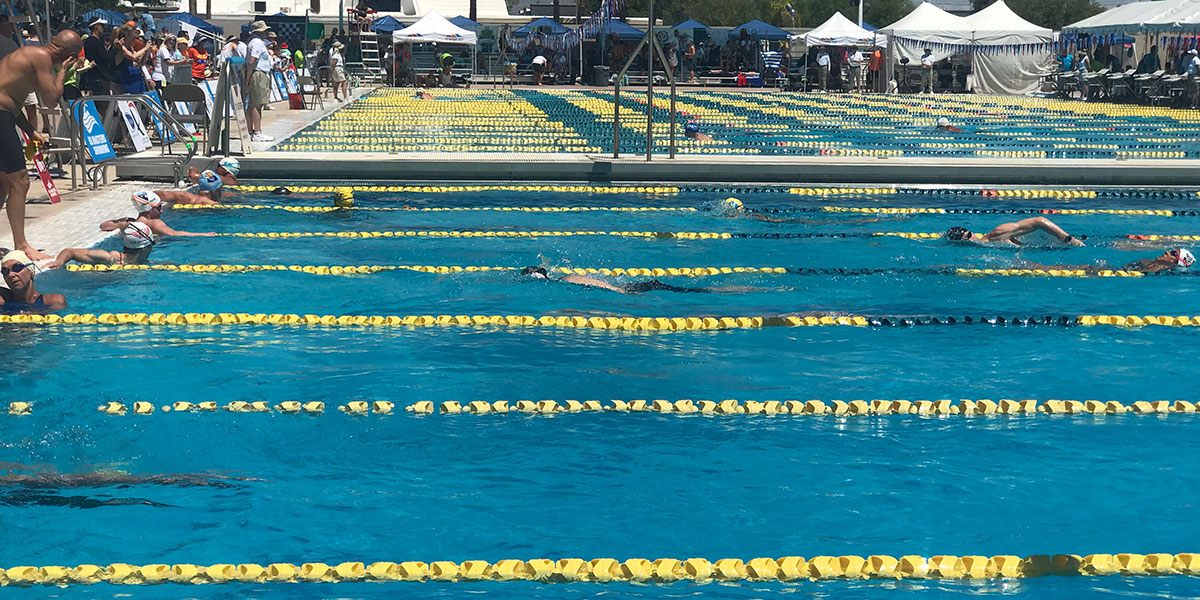
Multi-event Days
For swim meets and for those who are doing multiple workouts or events throughout the day, fueling and rehydrating between each session or race is crucial.
Avoid eating anything with fiber, fat, or protein between events taking place less than two hours apart. If the events are less than 2 hours apart, stick with fast-digesting carbs to refuel.
INFINIT’s USMS Custom Hydration blends are also a good option here, as they can supply all your needs through simple and easy-digestible fast acting carbs without risking overloading the gut.
Stay well hydrated but don’t over hydrate yourself and risk feeling bloated. If you aren’t feeling very thirsty then you won’t need to consume large amounts of fluids. A great sign to know if you are starting to become dehydrated is your thirst level.

Open Water and Marathon Swimming
If you're doing longer distance or open water swimming lasting 90 minutes or more, a fuel and hydration plan is an absolute must.
Endurance fueling boils down to a few simple elements. You’re simply looking to fuel and replenish, while causing as little disruption to your working body as possible:
Carbohydrates: Hourly energy needs will vary depending on your body size, composition, activity intensity, and duration. This typically falls between 60-90 grams of carbohydrates each hour.
Never take in an hour’s worth of calories all at once, this can cause GI issues and can hinder your performance. Instead, time and spread out your “feeds” and see if your support crew can help keep track of timing your intake. Practicing this during longer workouts pre-race day can be helpful in successfully timing your intakes.
Protein: While protein is usually reserved for post-workout, including a small amount of protein with a carbohydrate can become vital for races lasting longer than 3 hours. Protein has a satiating effect that curbs hunger, and also helps to stabilize blood sugar levels.
Hydration: Always continue to stay hydrated throughout the race by drinking fluids and electrolytes to keep up with your sweat losses.
Fueling and hydration strategies can take many different forms. Some people like to nosh on solid foods, and drink water separately. Others like to go with complete liquid nutrition, which can be easier to digest/absorb, and also simpler to consume while swimming.
INFINIT goes with the all liquid approach. One bottle of U.S. Masters Open Water mix each hour contains everything you need. You can also connect with an INFINIT dietitian for a free consultation to establish a personalized hourly fueling plan.

Post-Race Nutrition
You fueled. You raced. Now it’s time to recover and rebuild.
After your events are completed, you should turn your attention back to those “three R’s” of recovery: Refuel, Rebuild, Rehydrate.
Mixing up a bottle of the U.S. Masters Recovery Blend is an easy way to cover all 3 R’s — Each serving has 20 grams of protein to rebuild, along with 18 grams of carbohydrates to refuel. Mix the blend with 12-20 ounces of water to start the rehydration process. The blend’s light flavor makes it easy (dare we say refreshing) to drink under any condition.
Sources:
McCallum, K. (2019, November 13). Healthy Fats and where to find them. Houston Methodist On Health. https://www.houstonmethodist.org/blog/articles/2019/nov/healthy-fats-and-where-to-find-them/
MyPlate Plan. MyPlate. (2020). https://www.myplate.gov/myplate-plan
Nutrition for swim meets swimmers should focus on eating ... - teamunify. (n.d.). https://www.teamunify.com/ohfa/UserFiles/File/nutritionhandout.pdf
Saulio, S. (2017, July 3). How to fuel your open water swim. U.S. Masters Swimming. https://www.usms.org/fitness-and-training/articles-and-videos/articles/how-to-fuel-your-open-water-swim?Oldid=3370#:~:text=An%20hour%20before%20the%20race,to%2012%20ounces%20of%20water.
Saullo, S. (2018, October 29). Four easy tips for fueling without overdoing it. U.S. Masters Swimming. https://www.usms.org/fitness-and-training/articles-and-videos/articles/four-easy-tips-for-fueling-without-overdoing-it
Silver, M. D. (2001, February 9). Use of ergogenic AIDS by athletes. The Journal of the American Academy of Orthopaedic Surgeons. https://pubmed.ncbi.nlm.nih.gov/11174164/#:~:text=%22Ergogenic%20aid%22%20is%20defined%20as,chances%20of%20winning%20in%20competition.
Tuttle, M. (2020, February 17). Three easy ways to fuel your swimming workout. U.S. Masters Swimming. https://www.usms.org/fitness-and-training/articles-and-videos/articles/three-easy-ways-to-fuel-your-swimming-workout

